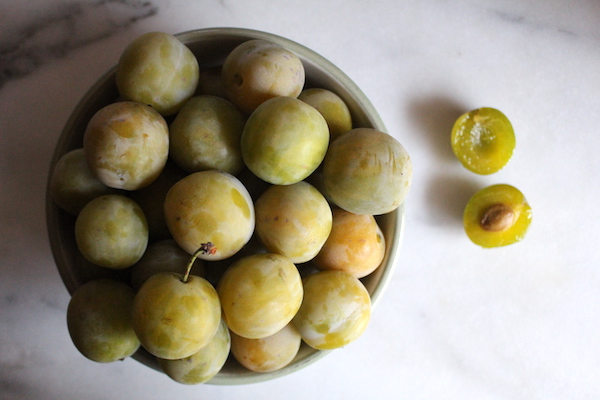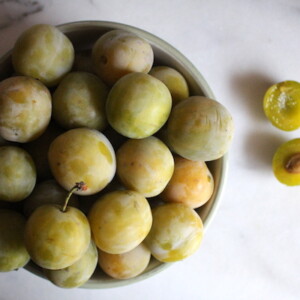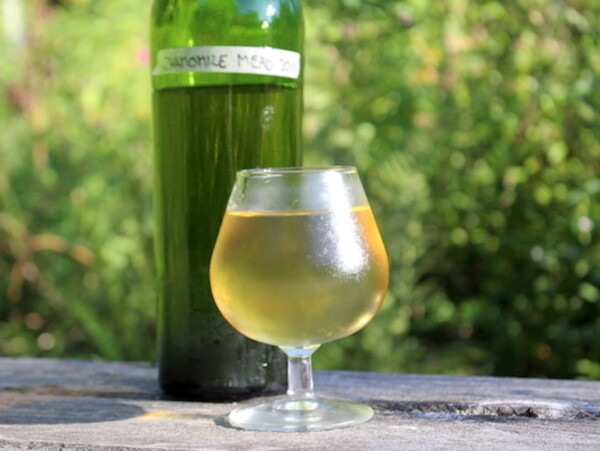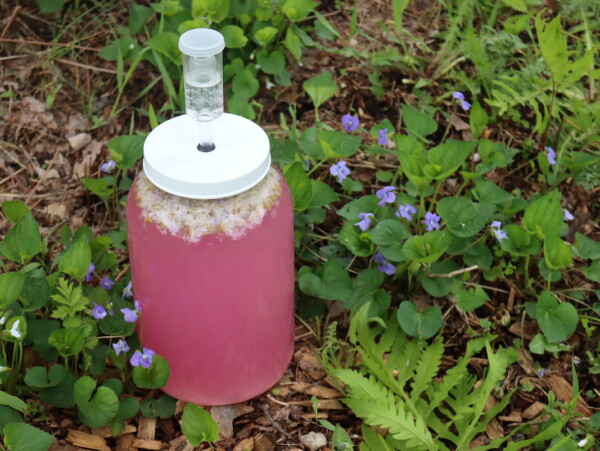Affiliate disclosure: This post may contain affiliate links. Please see our Privacy Policy.
Greengage wine is sweet and mild, with a pale yellow color and a classic sweet dessert wine finish.

Plums come in many flavors, some bitter and astringent like damson plums, others sweet and mild like greengages. Most are somewhere in the middle. Since greengage plums are sweet and mild with yellow flesh, they make a pale yellow dessert wine that’s unlike any other type of plum wine.
I came across a recipe specifically for greengage plum wine in the book Preserve It!, which has served me well in the past. It tends to have off the wall recipes that come out exceptionally good, like parsnip wine.
Believe it or not, parsnip wine was completely amazing, and one of the best wines I’ve made all year. That leaves me excited to try this plum wine recipe variation when the greengages come in next year.
This plum wine recipe is a bit unconventional, in that it first ferments the fruit in a bucket first, then strains it out, adds the sugar and racks it into a sealed carboy. Generally, the fruit and sugar are all put in at the start.
If you’ve never made wine before, review the basics of making small-batch wines before starting. Only have a handful of greengages? No worries, you can also make a micro-batch wine.

Greengage Plum Wine
Ingredients
- 4 1/2 lbs greengage plums
- 1 medium lemon, juiced, about 2 Tbsp
- 1 tsp Pectic Enzyme
- 1 tsp yeast nutrient
- 1 tsp wine yeast
- 6 1/2 cups Sugar
Instructions
- Pit the greengage plums, and then freeze them overnight. This breaks their cells to help them release juices but also helps damage the pectin that would cause a cloudy wine.
- Defrost the plums in a brewing bucket, and pour 3 quarts of boiling water over them. When completely cooled, add pectic enzyme, yeast nutrient, lemon juice, and wine yeast (but not the sugar). Cover with a towel or loosely with a lid and allow the mixture to ferment for 4-5 days.
- Dissolve the sugar in a quart of water on the stove, stirring to ensure all the sugar is completely incorporated. Allow the syrup to cool.
- Strain out the fruit mash through cheesecloth, collecting the juice. Place the juice into a sterilized carboy, and top with the sugar syrup. Add more water to fill if necessary.
- Seal with a water lock and allow the mixture to ferment at room temperature for 2 months. When fermentation has stopped, and no bubbles move through the airlock for at least 5 minutes, it's time to bottle.
- Bottle the wine in sterilized wine bottles, cork, and bottle age for at least 6 months before drinking.
Nutrition
Nutrition information is automatically calculated, so should only be used as an approximation.
More Fruit Wine Recipes
Looking for more easy fruit wine recipes? Try any of these:




When I froze my plums and thawed them, they were brown. Is that normal? Will the wine be no good because of this?
Thanks.
Apparently this is a very common thing. Some people say that they still taste ok while others say that it ruins the taste.
In the greengage wine it says to add yeast but not yeast nutrient is this correct? Many thanks carol
Yeast nutrient is optional in wines, and plums tend to have most of the right nutrients naturally. Grape wines usually don’t use yeast nutrient. The original recipe didn’t include it, but honestly, adding it can only help rather than hurt. I’ve amended the recipe to include it. (The rate is always 1 teaspoon per gallon with yeast nutrient.)
I was wondering how much wine this recipe is supposed to yield? I made it and it was about a gallon and a quarter of plum pulp before I added the sugar water. Is that about right? I used a 1-gallon carboy and a half-gallon carboy. Cross your fingers for me!
Very sorry, I just saw the marker for one gallon. Guess I should have added less water.
Sophie, it’s six months. How did your wine turn out?
hi! I have lots and lots of plums so I thought I’d try making wine but I prefer to do more research and learn a little more before suddenly embarking on a last minute project. that said, can I freeze the plums for months? I am thinking I’d like to work on making wine for Chris gifts but I’d need to freeze them now (August). TIA.
Yes it’s totally fine to use frozen fruit.